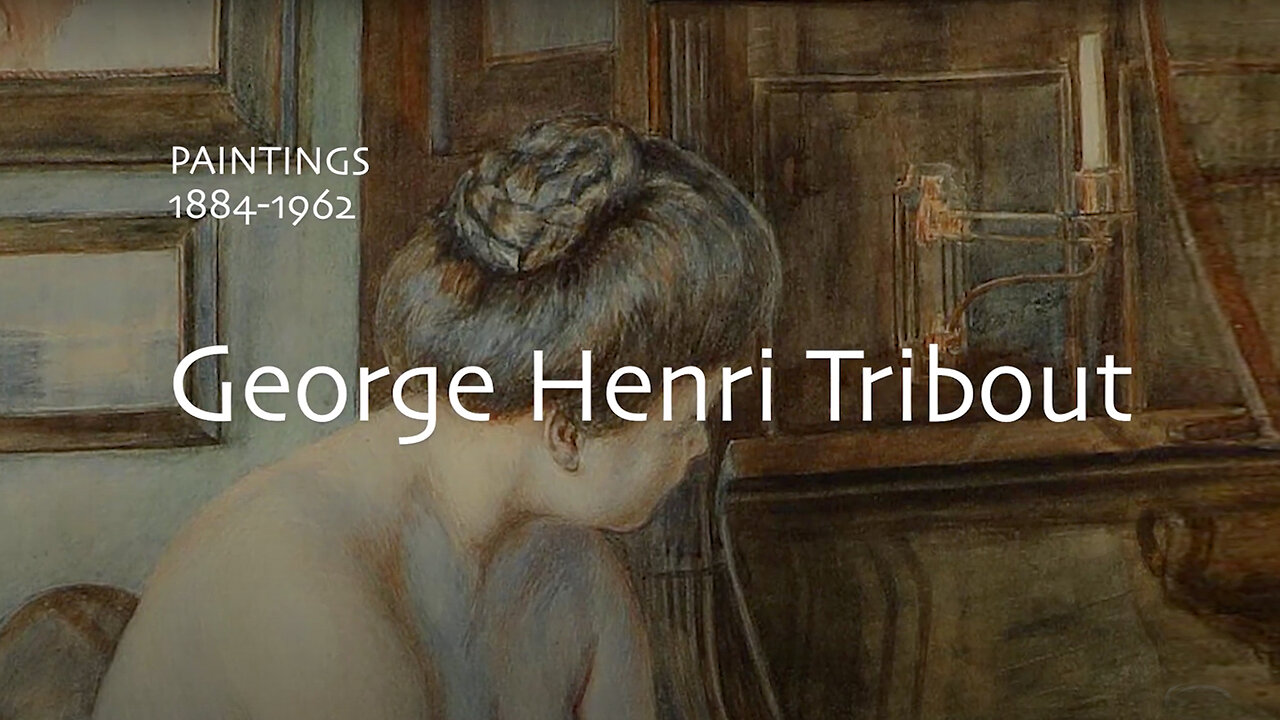Premium Only Content

Georges Henri Tribout - Paintings (1884-1962)
Georges Henri Tribout was a French artist. He studied at the Université de Notre Dame in Boulogne. Tribout attended the Académie Julian in 1904-1905. He started painting in the Cubist style and exhibited at the Salon des Indépendants in 1909, he showed a portrait of his friend Emile Verhauey. After the war he painted landscapes and portraits and exhibited at the Galerie Alligons in Paris, his works were permanently displayed there.
Tribout was included in the expositions of ceramics at l’Exposition des Arts Décoratifs in 1925, in Paris. At this time Tribout also designed posters, costumes theatrical sets and ceramics. From 1930 Tribout became interested in Architecture, forsaking gallery exhibitions. He continued to paint and died in 1962.
Georges Henri Tribout was born in Paris in 1884. After studying at the University of Notre Dame in Boulogne, between 1904 and 1905 he attended courses at the Académie Julian and in 1909 he exhibited his first works at the Salon des Indépendants in Paris. He soon decided to move to Saint Cloud, in the countryside not far from Paris, where his Belgian friend and art critic Emile Verhaeren had lived for some time, thanks to whom he came into contact with some artists, such as Ensor, Montald and Zweig. During the Great War, together with other painters, he joined the "Camouflage" corps of the French army, and once back in Paris he dedicated himself again to painting, mainly creating landscape subjects and portraits. In the early 1920s his production expanded towards new genres, including ceramics, scenography and architecture, so much so that in 1925 he participated in the Exposition des Arts Décoratifs in Paris. He dies in 1962.
Tribout, through his acquaintance with Emile Verhaeren and the painters he supported, had initially strongly felt the symbolist influence, however he soon detached himself from it, reworking the use of light in a post-impressionist key. Starting from the early 1910s, he approaches cubist stylistic elements, which however draw inspiration from Delaunian luminism rather than from the decompositional orthodoxy of Picassian matrix.
The painting The Lovers, presented here, is the spokesperson for these new styles. The work, dated 1919, highlights how the artist, having abandoned the decomposition of the subject hitherto created with small touches of color, began a new stylistic phase in which the contours, rendered with soft chromatic strokes, flanked by a flat color in large fields. Certainly the war years spent in the "Camouflage" section of the army had played an important role in the modulation of the new style. This is evident above all in the backgrounds, sometimes real camouflage textures, as in Gli Amanti himself or in Nudo, a canvas of similar date. However, contrary to what happens in camouflage, the subject remains the protagonist and emerges through the use of an incisive contour line and a significant light. In fact, the two lovers, represented embracing in the center of the composition, stand out in the pictorial space thanks to the cascade of light that breaks on the woman's back and to the marked perimeter of the bodies, given that this already suggests the interest in that shortly thereafter it will become a founding trait of the artist's works.
The recent cleaning works of the work have revealed and brought to light on the back, a painting that Tribout had executed and then covered to reuse its support for The Lovers. The work depicts a woman in the mirror who is combing her hair and stylistically refers, both in the choice of the subject and in the execution, to the works created by the artist between 1909 and 1911. In fact, the composition, built on soft colors, applied in small touches and on an extremely vibrant light, it recalls works such as Les bagneuses, which Tribout had created in 1909, or Nude of 1911, canvases where the Cezannian lesson is permeated by a markedly impressionist legacy.
-
 LIVE
LIVE
The Jimmy Dore Show
42 minutes agoBiden RENEGES on Pledge not to Pardon Hunter! Rebel Groups in Syria Capture Aleppo! w/ Ed Dowd
8,647 watching -
 LIVE
LIVE
WeAreChange
1 hour agoBIDEN 180: Crime Family Coverup Exposed By Joe’s Pardon Of Hunter!
1,624 watching -
 47:03
47:03
Kimberly Guilfoyle
3 hours agoThe FBI is now Kash Only, Live with Larry Elder & Steve Friend | Ep. 178
26.8K7 -
 1:54:22
1:54:22
Redacted News
3 hours ago"BREAKING! Trump Declares WAR on Deep State Biden Corruption, Hunter Biden Pardon Exposed "
60.9K101 -
 51:33
51:33
Candace Show Podcast
4 hours agoHunter Biden Didn’t Do ‘Nuffin | Candace Ep 112
52.7K156 -
 1:01:54
1:01:54
LFA TV
22 hours agoJOE PARDONS HUNTER TO SAVE HIMSELF?! | UNGOVERNED 12.2.24 5pm EST
9.13K3 -
 3:49:26
3:49:26
JackknifeFinnegan
4 hours agoWELCOME TO RUMBLE, WELCOME TO FREEDOM
24.8K -
 14:22
14:22
China Uncensored
1 hour agoSomething Has Gone TERRIBLY Wrong In China
332 -
 3:19:13
3:19:13
Yefune Kenizi's [PC] Gaming
4 hours ago $3.55 earnedGTAO - Diamond Casion Heist Week: Monday w/ GamingChad and Takumi
33.6K2 -
 1:57:20
1:57:20
The Quartering
6 hours agoJoe Biden's Insane Pardon Of Hunter & Trumps Response, Dr Disrespect Joins Rumble, Kash To FBI!
81.1K55